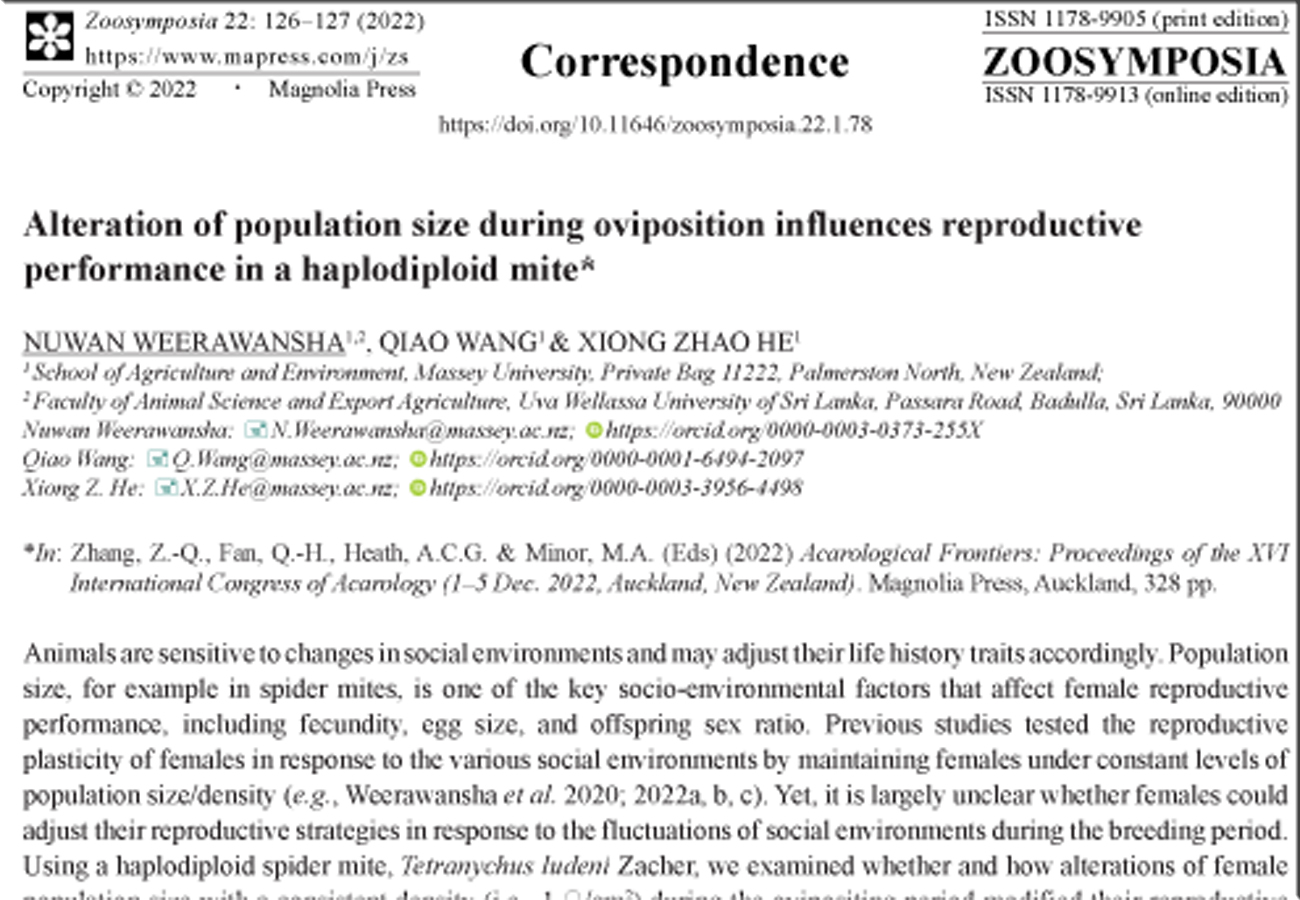Abstract
Animals are sensitive to changes in social environments and may adjust their life history traits accordingly. Population size, for example in spider mites, is one of the key socio-environmental factors that affect female reproductive performance, including fecundity, egg size, and offspring sex ratio.
References
Macke, E., Magalhães, S., Do-Thi Khan H., Luciano, A., Frantz, A., Facon, B. & Olivieri, I. (2011) Sex allocation in haplodiploids is mediated by egg size: Evidence in the spider mite Tetranychus urticae Koch. Proceedings of the Royal Society B: Biological Sciences, 278 (1708), 1054–1063. https://doi.org/10.1098/rspb.2010.1706
Weerawansha, N., Wang, Q. & He, X.Z. (2020) Effect of foundress population density and size on reproduction and population growth of a haplodiploid mite. Systematic and Applied Acarology, 25 (11), 2063–2076. https://doi.org/10.11158/SAA.25.11.11
Weerawansha, N., Wang, Q. & He, X.Z. (2022a) Adjustment of fecundity and sex ratio in response to social environments in a haplodiploid mite. Systematic and Applied Acarology, 27 (1), 61–70. https://doi.org/10.11158/saa.27.1.7
Weerawansha, N., Wang, Q. & He, X.Z. (2022b) Local mate competition model alone cannot predict the offspring sex ratio in large and dense populations of a haplodiploid arthropod. Current Zoology, zoac022. https://doi.org/10.1093/cz/zoac022
Weerawansha, N., Wang, Q. & He, X.Z. (2022c) Comparing the effects of social environments and life history traits on sex allocation in a haplodiploid spider mite. Systematic and Applied Acarology, 27 (10), 2123–2130. https://doi.org/10.11158/saa.27.10.20


